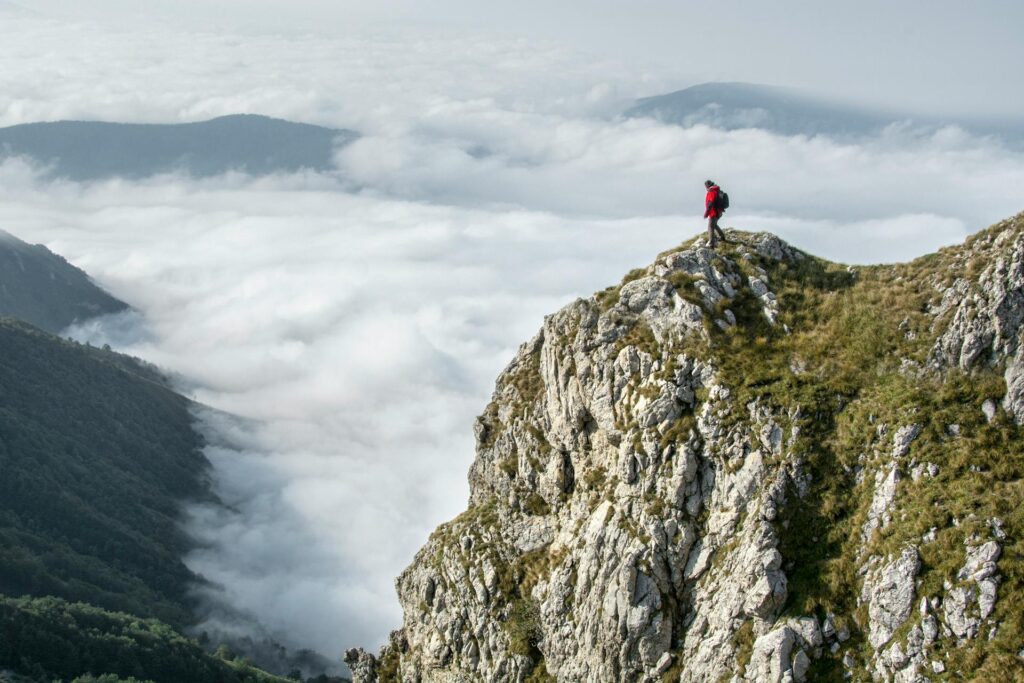There’s nothing quite like the exhilaration of hiking in the high mountains. Alpine trails promise sweeping vistas, fresh air, and the thrill of standing among the world’s tallest peaks. Whether you’re a seasoned trekker or a nature lover seeking your next great adventure, this guide explores the most spectacular alpine hikes across the globe. Discover routes that wind through wildflower meadows, skirt glaciers, and offer unforgettable views—each one a testament to the majesty of the mountains.
Why Alpine Hiking Captivates Adventurers
Alpine hiking is more than just a walk in the mountains. It’s a journey through some of the planet’s most dramatic landscapes—where snow-capped summits pierce the sky, turquoise lakes reflect towering cliffs, and every turn reveals a new panorama. Beyond the scenery, alpine trails immerse you in unique cultures, wildlife, and the timeless rhythms of nature.
The Best Alpine Hikes in the World
1. Tour du Mont Blanc (France, Italy, Switzerland)
Distance: 170 km (105 miles)
Duration: 7–12 days
Difficulty: Challenging
The Tour du Mont Blanc is the ultimate Alpine trek, circling Western Europe’s highest peak and passing through three countries. Hikers traverse high passes, lush valleys, and charming mountain villages, with constant views of Mont Blanc’s snowy crown. The route is a bucket-list classic, blending physical challenge with cultural immersion and world-class scenery. You can customize your journey, hiking the full loop or choosing shorter sections, and enjoy everything from rustic mountain huts to gourmet meals along the way.
2. Zermatt and the Matterhorn (Switzerland)
Zermatt is synonymous with the Matterhorn, one of the world’s most iconic peaks. The region offers a network of well-marked trails for all abilities, from the family-friendly Five Lakes Walk—where you’ll see the Matterhorn reflected in pristine alpine lakes—to more challenging routes that take you closer to the mountain’s base. The Gornergrat Railway Hike is a must, offering sweeping vistas of the Matterhorn and surrounding glaciers. After a day on the trails, Zermatt’s cozy lodges and cultural attractions provide the perfect alpine retreat.
3. Walker’s Haute Route (France, Switzerland)
Distance: 200 km (124 miles)
Duration: 10–14 days
Difficulty: Challenging
Starting in Chamonix at the foot of Mont Blanc and ending in Zermatt beneath the Matterhorn, the Walker’s Haute Route is the ultimate thru-hike for serious trekkers. You’ll cross 11 high passes, traverse wildflower meadows, and pass under 10 of the 12 highest peaks in the Alps. The route is demanding but rewards hikers with constantly changing scenery—from glacial valleys to rocky ridges and charming Swiss villages.
4. Aletsch Glacier Panorama Trail (Switzerland)
The Aletsch Glacier, a UNESCO World Heritage Site, is the largest glacier in the Alps and a highlight for any alpine hiker. The Panorama Trail offers breathtaking views of the glacier’s icy expanse, surrounded by wildflower meadows and dramatic peaks. Take a gondola up to Eggishorn for a mind-blowing viewpoint, then hike down to Fiescheralp or explore the Moosfluh viewpoint for a different perspective. The accessibility and beauty of this region make it a favorite for both casual walkers and serious trekkers.
5. Eiger Trail (Switzerland)
The Eiger Trail is a classic high-Alpine route that runs beneath the infamous north face of the Eiger. This moderately challenging hike offers dramatic views of glaciers, waterfalls, and the Bernese Alps. It’s a must for anyone wanting to experience the grandeur of Swiss mountains without committing to a multi-day trek.
6. Schynige Platte Panorama Trail (Switzerland)
This scenic loop offers panoramic views of the Eiger, Mönch, and Jungfrau peaks, as well as Lake Brienz and Lake Thun. The trail is accessible via a historic cogwheel railway and is famous for its wildflowers, alpine gardens, and sweeping vistas. It’s a perfect introduction to Swiss alpine hiking for all skill levels.
7. Via Alpina (Alps, Multiple Countries)
The Via Alpina is a network of long-distance hiking trails that cross eight Alpine countries, from Slovenia to Monaco. The Swiss section is particularly stunning, taking hikers through high passes, remote valleys, and traditional villages. Whether you tackle a short segment or the entire route, the Via Alpina is the ultimate journey for those seeking to immerse themselves in the heart of the Alps.
8. Lauterbrunnen Valley Waterfalls (Switzerland)
Lauterbrunnen Valley is often called the “Valley of 72 Waterfalls,” and its hiking trails offer a magical experience. Walk beneath thundering cascades, through flower-filled meadows, and past traditional Swiss chalets. The valley is surrounded by sheer cliffs and snow-capped peaks, making it one of the most picturesque places in the Alps.
9. Gemmi Pass to Leukerbad (Switzerland)
This historic trail crosses the Gemmi Pass, offering dramatic views of the Valais Alps and the Bernese Oberland. The route descends to the spa town of Leukerbad, where you can soak in thermal baths after your hike. It’s a perfect blend of adventure, history, and relaxation.
10. Swiss National Park Trails (Switzerland)
Switzerland’s only national park is a haven for wildlife and pristine landscapes. Well-marked trails wind through forests, alpine meadows, and rocky ridges, offering chances to spot ibex, marmots, and golden eagles. The park’s strict conservation rules ensure a wilderness experience like no other.
11. W Circuit, Torres del Paine National Park (Chile)
Distance: 80 km (50 miles)
Duration: 4–7 days
Difficulty: Hard
Patagonia’s W Circuit is one of the world’s most spectacular alpine hikes, with its jagged peaks, turquoise lakes, and glaciers. The route takes you to the foot of the Torres del Paine towers, past Grey Glacier, and through wild, wind-swept valleys. The scenery is dramatic and ever-changing—a true test for adventurous hikers.
12. Great Ocean Walk (Victoria, Australia)
Distance: 96 km (60 miles)
Duration: 6–8 days
Difficulty: Moderate
While not in the Alps, the Great Ocean Walk offers a unique alpine-coastal hybrid experience. Hikers traverse eucalyptus forests, cliffside paths, and remote beaches, with the Twelve Apostles sea stacks as a dramatic finale. Along the way, spot native wildlife like kangaroos and wallabies, and enjoy the solitude of sleeping under the stars.
13. Mount Kilimanjaro (Tanzania)
Distance: 62 km (38.5 miles) via Machame Route
Duration: 7–10 days
Difficulty: Challenging
Africa’s highest peak, Mount Kilimanjaro, is a legendary alpine challenge. The Machame Route is known for its varied landscapes—rainforest, moorland, alpine desert, and glacier-capped summit. No technical climbing is required, but acclimatization and determination are essential. The sunrise from Uhuru Peak is an experience you’ll never forget.
14. Half Dome, Yosemite National Park (USA)
Distance: 23 km (14 miles)
Duration: 1–2 days
Difficulty: Strenuous
Half Dome is one of the most recognizable peaks in the Sierra Nevada. The trail is a challenging ascent through forests and granite domes, culminating in a thrilling cable climb to the summit. The views of Yosemite Valley and the surrounding mountains are breathtaking—a must for any serious hiker.
15. Puez-Odle Altopiano, Dolomites (Italy)
The Dolomites are famed for their jagged limestone peaks and dramatic scenery. The Puez-Odle Altopiano offers a classic Dolomite experience, with trails winding through alpine meadows, past turquoise lakes, and beneath towering cliffs. The region is also known for its unique culture, blending Italian and Austrian influences.
Tips for Hiking in Alpine Terrain
- Plan for the Weather: Mountain weather can change rapidly. Always pack layers, rain gear, and sun protection.
- Acclimatize: Altitude can affect even fit hikers. Spend time at higher elevations before tackling major ascents.
- Navigation: Carry a map, compass, or GPS. Trails are usually well-marked, but fog or snow can obscure signs.
- Stay Hydrated and Fueled: Bring plenty of water and high-energy snacks.
- Respect Nature: Stay on marked trails, leave no trace, and respect local wildlife and flora.
When to Go
- Europe’s Alps: Best from late June to early September, when trails are snow-free and huts are open.
- Patagonia: December to February for summer weather.
- Kilimanjaro: January–March and June–October for the best summit conditions.
- Yosemite and Sierra Nevada: Late spring to early fall, depending on snowpack.
Final Thoughts: Answer the Call of the Mountains
Alpine hiking is a celebration of the world’s wildest and most beautiful places. Whether you’re gazing at the Matterhorn, circling Mont Blanc, or standing atop Kilimanjaro, these trails offer adventure, challenge, and inspiration. The mountains are calling—are you ready to answer?


